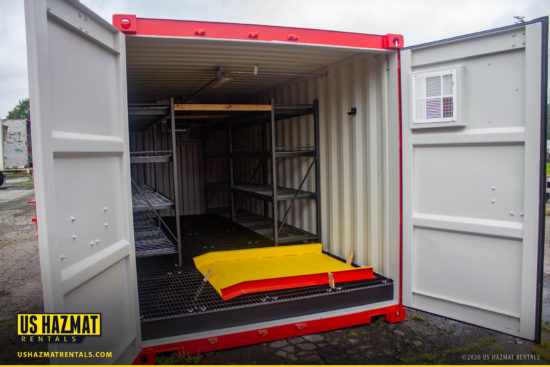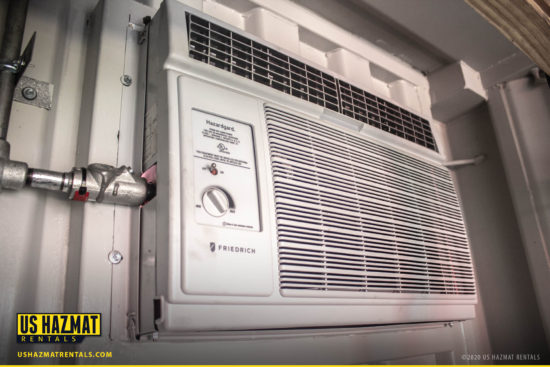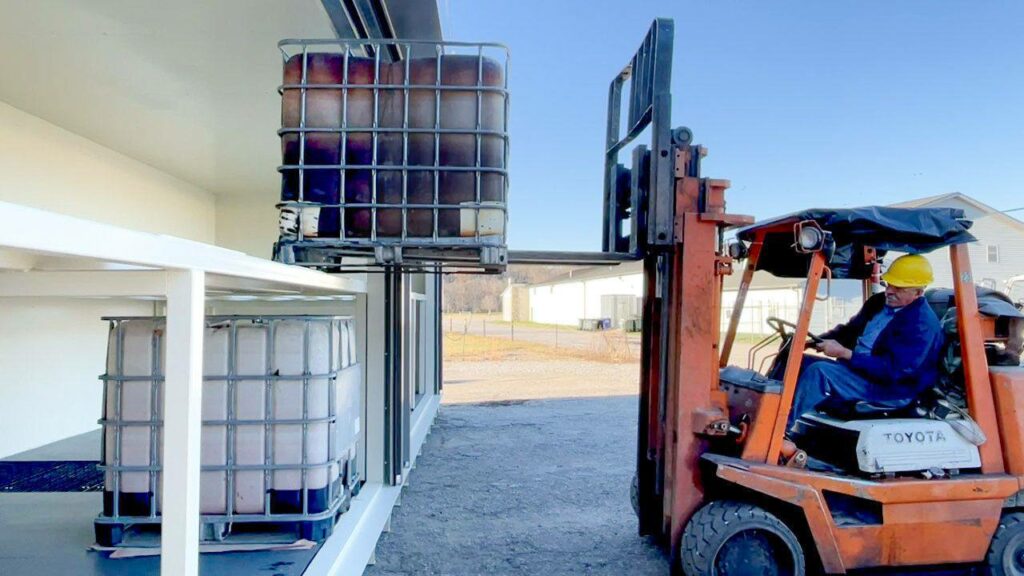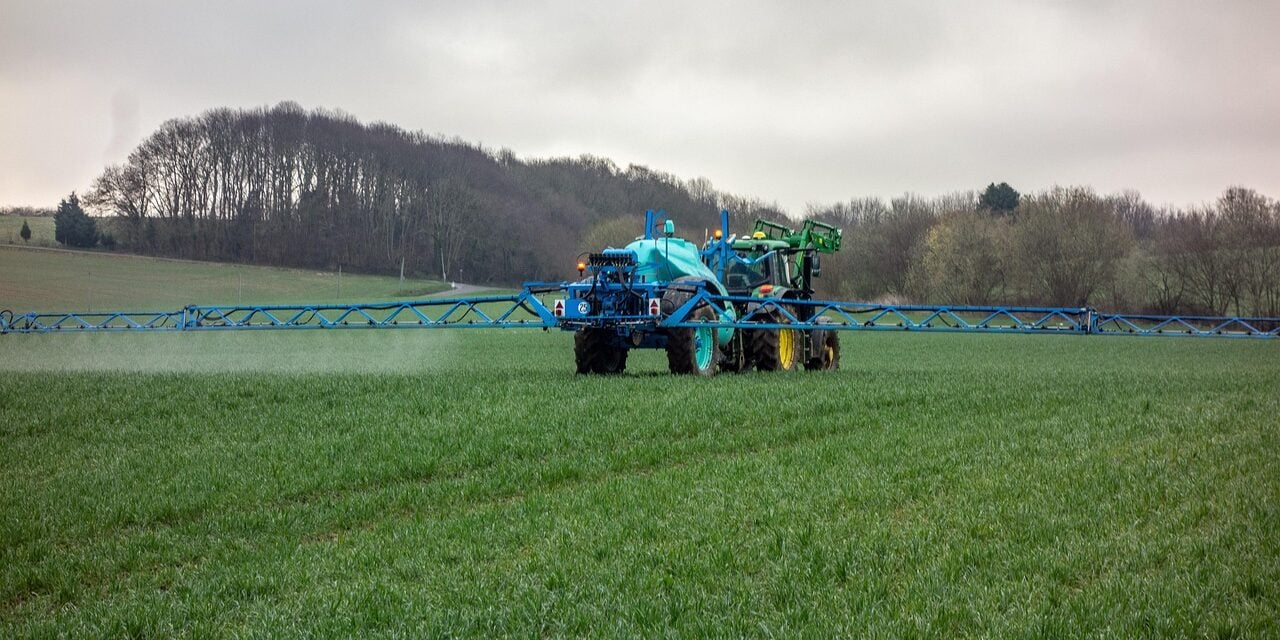Safe and compliant fertilizer storage protects expensive and volatile chemical stockpiles while safeguarding environmental integrity. Although fertilizers replenish depleted topsoil with fresh nutrients, negligent flammables storage leads to hazmat incidents and employee exposure. Moreover, granular fertilizers can degrade in unsuitable environments, becoming clumpy before separating and degrading. Many popular fertilizers, including ammonium nitrate are also flammable and toxic. While not inherently flammable, many fertilizers act as oxidizers, fueling combustible materials fires. Storing agriculture fertilizers in a steel reinforced chemical storage lockers shields workers while maintaining chemical consistency for bountiful harvests.

Our fertilizer storage warehouses safeguard dangerous fertilizer mixtures and containers from inadvertent spills, degradation, and fires. We design, engineer, and optimize chemical storage lockers for fertilizer drum storage, chemical totes, and palletized materials. Onsite chemical protection prevents incidents resulting in hefty civil penalties and undue negative press. Centralized storage separates fertilizers from incompatible materials and vulnerable property while encouraging astute inventorying with proper labeling for timely application. Moreover, our warehouses adhere to NFPA 400 for proper flammable materials storage, including ammonium nitrate.
Is Fertilizer a Hazardous Material?
Depending on their chemical makeup, most fertilizers are hazardous materials. Ammonium phosphate, sulfate, copper salts, lime, pesticides, and potassium chloride negatively react with fertilizers. Concentrated and water soluble synthetic fertilizers also meet hazard classification. Human exposure to fertilizers can lead to skin irritation, burning sensations in the throat and nose, and neurological effects. Along with safety and hazmat mitigation options, our chemical storage locker packages can also include eye washing stations for prompt flushing during inadvertent exposures.
What are the Rules for Storing Fertilizers?

Storers should always keep fertilizers away from combustible materials, including hay and fuel oil. Horticulturalists and recreation venues should store fertilizers away from other dangerous chemicals and incompatible materials, like acids, oxidizers, metals and organic materials. Fertilizer handlers should consult the manufacturer’s fertilizer Material Safety Data Sheets for chemical properties, incompatible substances, fire-fighting measures, and general storage guidelines before storage. Inventory managers should always keep fertilizers in a segregated and ventilated chemical warehouse. Optional climate control shields fertilizers from temperature inversions, degradation, and theft while engendering keen organization for product management.
What are the Storage Standards for Fertilizer?

Agriculturalists should always store fertilizers in a cool, dry, and well-ventilated storage area away from sunlight, heat, and moisture. Storage areas must be level and free of debris. Avoid stacking fertilizer drums and totes above eye-level with a low working center of gravity. Our fire-rated and non fire-rated warehouses segregate incompatible materials from dangerous fertilizer stockpiles. Wide swinging or optional roll-up doors allow for the safe and organized storage and retrieval of fertilizer drums and totes by forklift or hand-truck.
What are the Hazards of Storing Fertilizers?
Improper hazmat storage can result in compromised and damaged metal drums, totes and containers. Escaping chemicals will invariably reach the water table, polluting streams and the ecosystem. Toxic additives also pose significant health risks to workers and site visitors while potentially cross-contaminating sterile workflows. When stacking fertilizer bags, avoid stacking them more than three bags high and ensure each stack is within a 300 ton maximum limit.
Can You Store Fertilizer in a Shed?
Although storing fertilizer in a shed provides minimal protection, safely maintaining fertilizers in a steel-welded and lockable chemical storage warehouse is the best method for hazard mitigation and proper inventorying. Moreover, most wood sheds and prefabricated utility buildings aren’t impervious from leaks and moisture. Our hazmat lockers and warehouses meet OSHA Standard 1910.109 for ammonium nitrate storage while adhering to OSHA Standard 1910.106 for flammable and combustible liquids, including fertilizers. Employees should store fertilizers away from farm equipment and applicators as unintended jostling from clutter often punctures and compromises storage containers.






